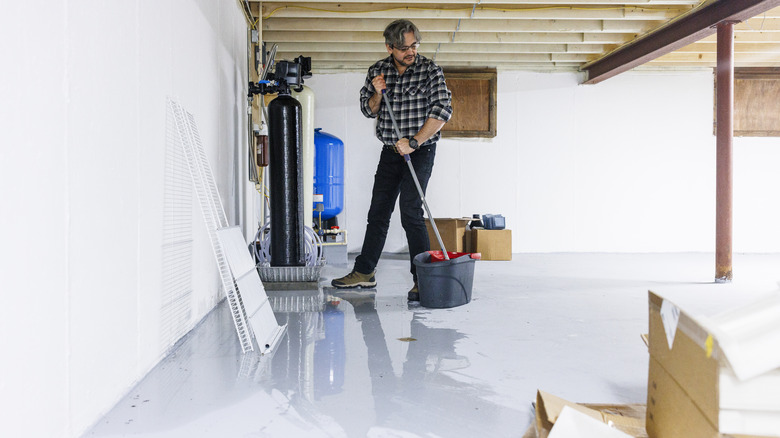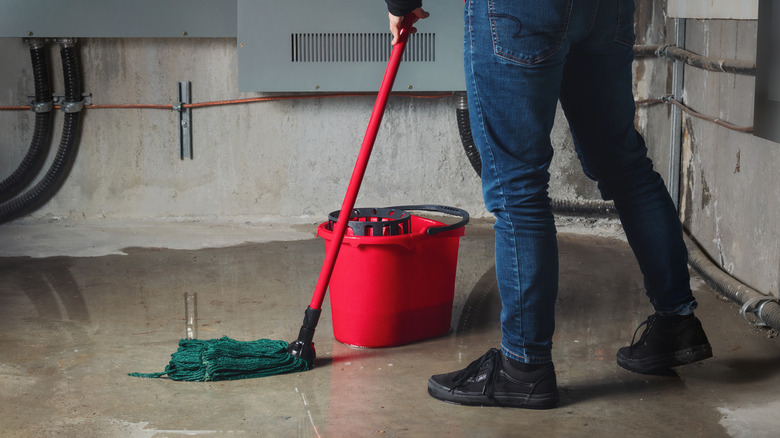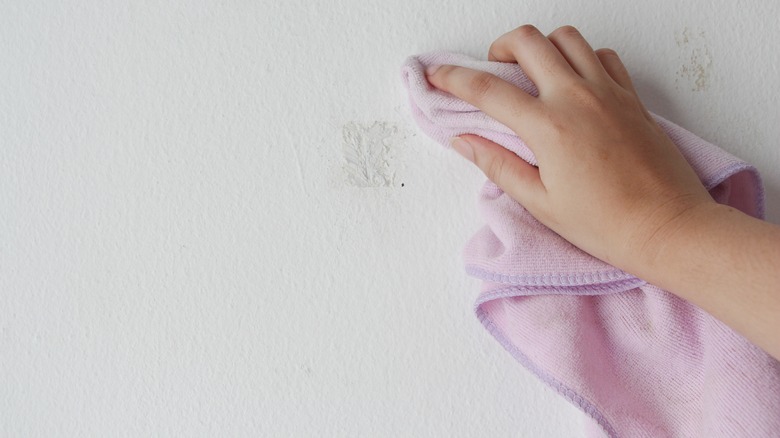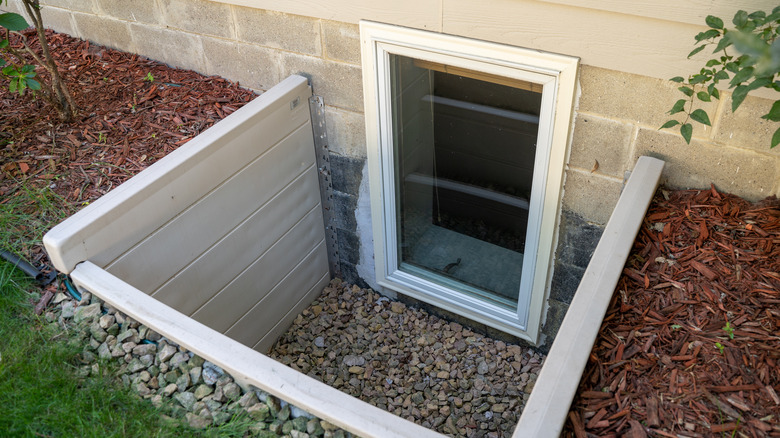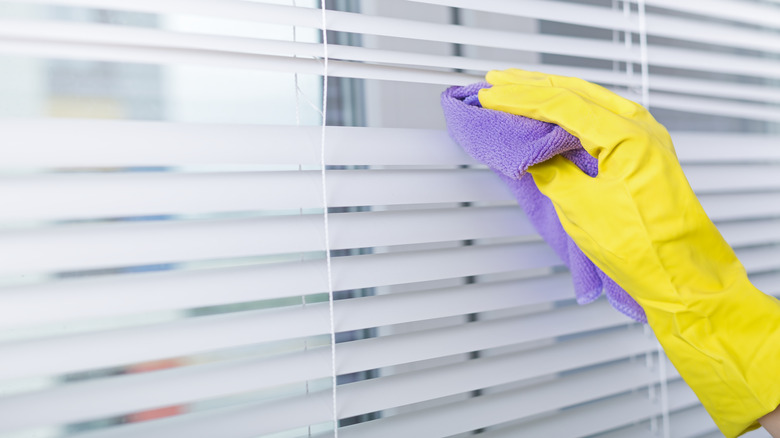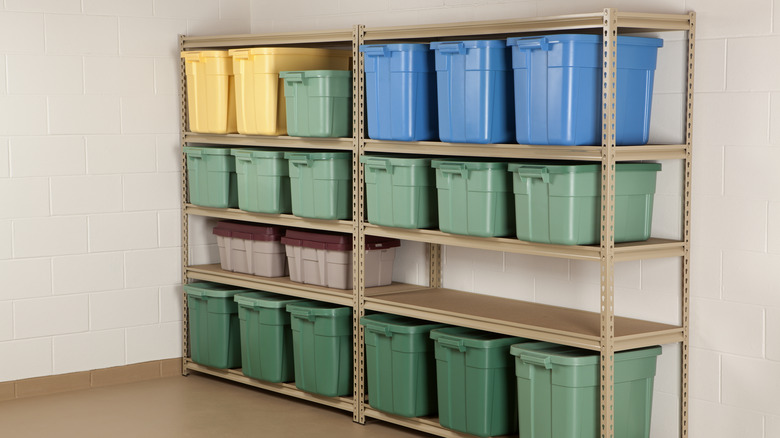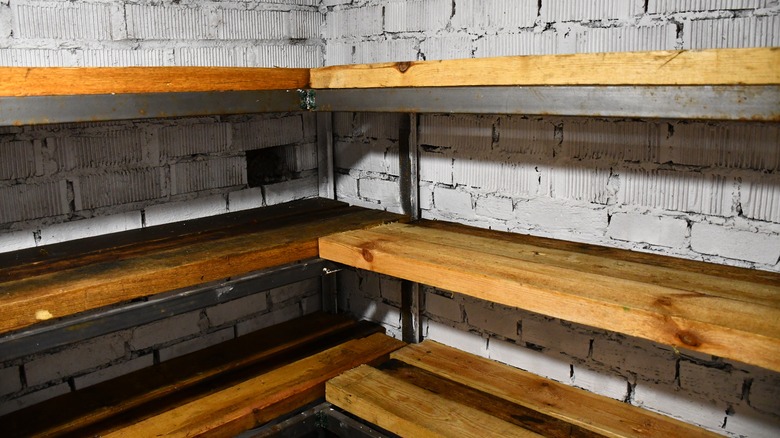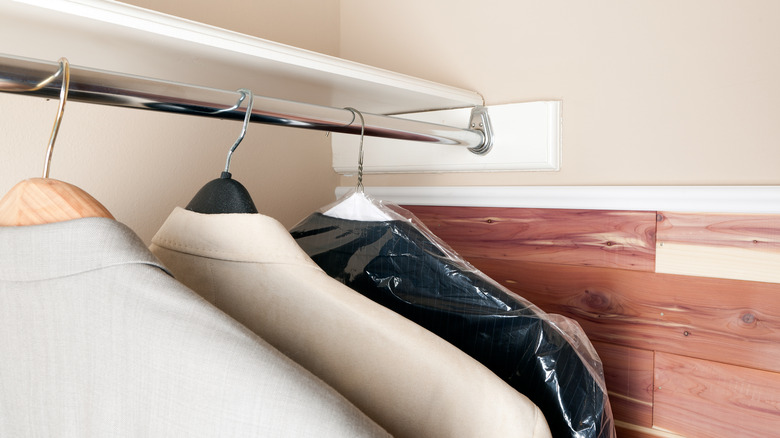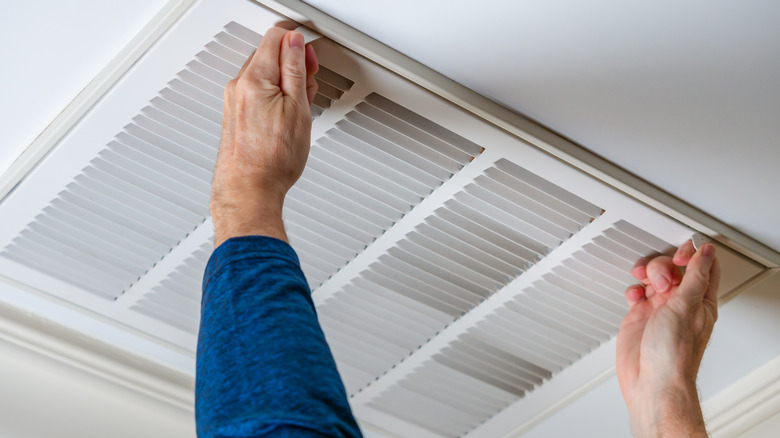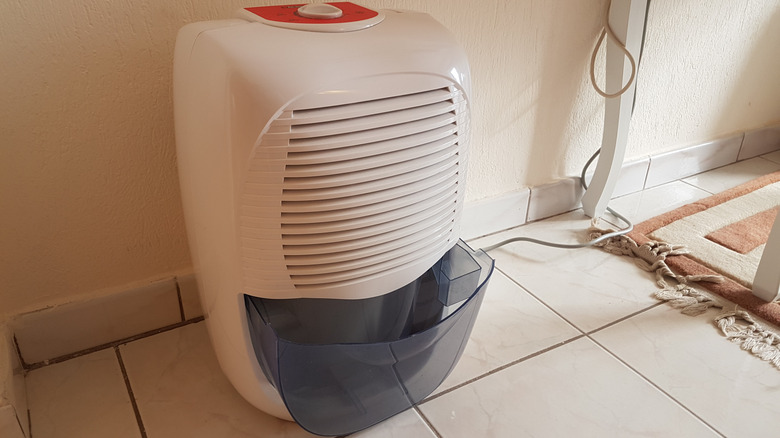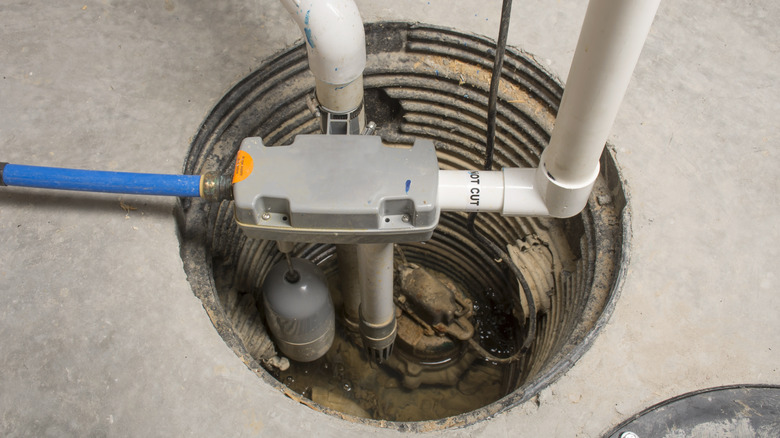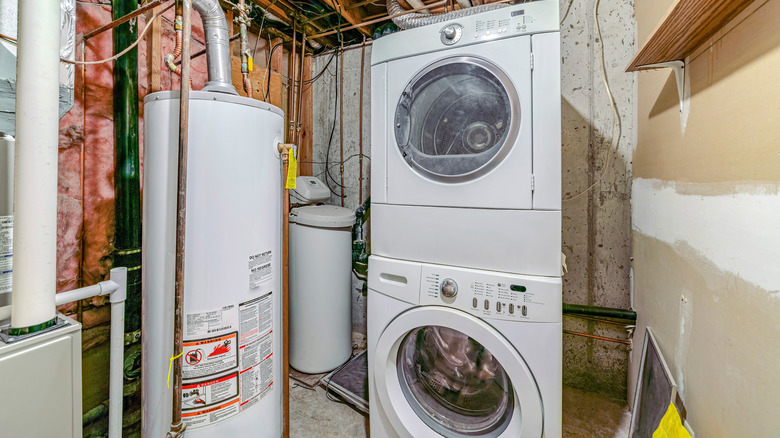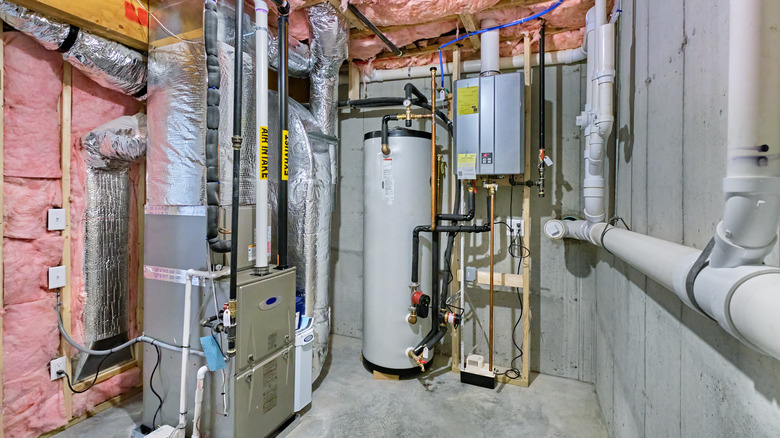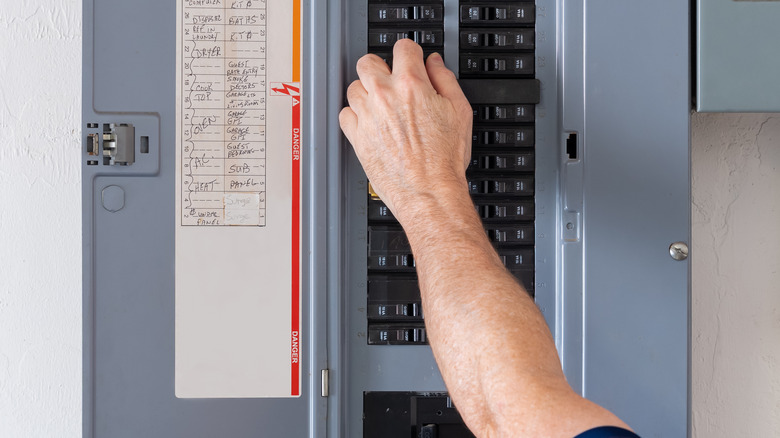14 Things In Your Basement That You Should Be Cleaning Monthly
We may receive a commission on purchases made from links.
Regularly cleaning your basement might seem like an unnecessary chore for a space that is largely out of sight, but the habit goes beyond simple aesthetics. A clean basement contributes to an overall healthier living environment. By nature, these spaces are prone to dampness and mold growth due to typically lower levels of ventilation and natural light. Regular cleaning and decluttering can significantly mitigate these issues, reducing the risk of mold and mildew that can lead to respiratory problems, allergies, and other health concerns. In addition, tidiness deters pests that can burrow in cluttered areas.
Beyond health, a clean basement enhances the functionality and usability of the space. Whether used for storage, a home gym, a workspace, or an additional living area, an organized and clean space is more inviting and efficient. Plus, monthly cleaning will help avoid bigger cleanups later. Whether you have a finished or unfinished basement, cleaning pros recommend the following.
Clean the floor
To clean sealed concrete floors, start by sweeping or vacuuming, making sure to get into the borders and corners. Then, use a mop dipped in a solution of mild detergent and water to clean the floor. Avoid using harsh chemicals or abrasive cleaners that could damage the sealant. For tougher stains, a product like Zep Neutral Ph Floor Cleaner from Lowe's can be used. When you're done, dry the floor thoroughly with a clean mop or towels to prevent water spots and preserve the integrity of the sealant.
Since unsealed concrete is more porous, it can absorb stains more readily. So, try to catch any spills quickly. Use a small amount of a gentle cleanser, like dish soap, and scrub with a damp cleaning brush. For persistent stains, consider using a mixture of baking soda and water to form a paste, apply it to the stain, and scrub after letting it sit for a few minutes. If you find a grease stain, absorb the excess grease with sawdust or cat litter, and leave it on for several hours to a day. When you're finished spot cleaning, the process is similar to that used on sealed concrete floors. Begin by sweeping or vacuuming, and then use a mild detergent to clean the floors with a mop. Rinse the floor with clean water and dry mop it to avoid moisture retention, which can lead to mold or mildew growth.
Wipe down walls
While it may seem like a big job, regularly doing quick cleanups on walls in the basement will help avoid bigger messes that require more time and energy. Remove any furniture, storage items, or obstacles from the walls for easy access before cleaning. Then, use a broom, dusting cloth, or vacuum cleaner with a brush attachment to remove cobwebs or dust from the wall's surface. Pay special attention to corners and ceiling edges where dust tends to accumulate.
For unfinished basements with concrete or masonry walls, fill a bucket with water and mild soap suitable for the surface. Use a hard bristled brush or heavy-duty sponge to wipe down the walls. For finished basements with drywall, use a product like Chomp! Wall Cleaner from Amazon and wipe the walls down with a soft cloth or gentle sponge. This is also a good time to clear off ceiling surfaces where dust can linger as well.
Wash the windows
Although not glamorous, regularly cleaning basement windows adds more natural light by letting in more sun. Start on the inside of the windows, which can easily be cleaned monthly regardless of weather. First, dust the window frames and sills with a soft cloth or vacuum cleaner attachment. Moving on to the glass, clean the windows to a streak-free finish using a solution of equal parts white distilled vinegar and water in a spray bottle. Spray it onto the glass and wipe it with a smooth cloth or a squeegee. Finish by going over lightly with a clean, lint-free cloth.
Cleaning pros also recommend that you wash the exterior of your windows regularly. This is especially important for egress windows as their position leaves them more exposed to the elements. You may not want to do this as frequently in winter months but it's a good monthly routine for warmer seasons. First, use a hose to rinse off caked-on dirt or debris such as leaves or cobwebs. Then, get scrubbing with a sponge and hot, soapy water to remove stuck-on residue that wasn't removed with the hose. You can use dish detergent for this step — no special cleaner is needed. Finally, rinse and dry with a lint-free cloth or a squeegee.
Dust window blinds
Dust builds up quickly in the basement, and your blinds act like a dust magnet. Do a quick monthly cleanup to avoid that telltale layer of dust that turns them gray. The easiest way to clean your blinds is to use equipment designed to make the task more efficient. You can use a cleaning brush designed with a handle and cloth-covered prongs to get in between each blind slat like this one on Amazon. If you don't have a specialized brush, use a microfiber cloth, duster, or vacuum cleaner with a brush attachment. Begin at the top and work your way down, gently wiping each slat to remove dust and debris. For stubborn dust, dampen a cloth slightly with water or an all-purpose cleaner.
For deeper cleaning that only needs to be done two or three times a year, remove waterproof blinds from the window and wash them in a bathtub or large basin filled with warm water and mild detergent. Gently scrub each slat with a sponge or soft brush, then rinse thoroughly with clean water. Allow the blinds to air dry completely before reinstalling them.
Declutter storage containers
Cleaning up storage areas and storage containers in the basement is an often overlooked task. Over time, basements can become cluttered with unused items, which can lead to difficulty finding things, create a haven for pests, and even pose fire hazards if those storage containers are packed around exit routes or near electrical outlets.
Clean the space by dusting the tops and sides of the containers with a towel or reusable cloth. Move the containers to sweep and vacuum the floor, and check for any signs of pests while you're moving things around. The best way to detect rodents and insects is to look out for and identify pest droppings and then take the best action based on the intruder. Implementing a regular cleaning schedule will help maintain the area, prevent the accumulation of dust and mold, and make it easier to access your belongings. For bigger, annual cleaning projects, take time to organize the inside of containers, too. Use clear, labeled containers for what you decide to keep, organizing items by category or season to make things easier to find and access.
Maintain shelving units
Shelving units are an ideal choice for basement storage. They extend your total storage area by creating more vertical space, maximizing limited floor space in basements. Additionally, shelving units elevate items off the ground, helping to protect them from damp floors and potential water damage in case of basement flooding or leaks.
While shelving doesn't seem to need much attention, a quick cleaning is all that's needed monthly. Use a soft microfiber cloth or a duster to wipe down shelves and surfaces to prevent dirt buildup and remove any cobwebs or insects. Additionally, visually inspect shelves for any signs of damage, such as warping, cracking, or sagging. Every six months to a year, do a deeper clean. Remove items from the shelves and wipe down surfaces with a mixture of warm water and mild detergent. For any dirt buildup, use a gentle cleaner and cloth suitable for the material on your shelves.
Organize closets
While it's wise to organize all the closets in your home regularly, basement closets require some additional attention. These storage areas differ from other closets due to the potential for moisture, lack of natural light, and the fact that they are typically accessed infrequently or for seasonal items. This infrequent use makes them more prone to pests, especially hungry moths.
So, you'll also want to mothproof your clothing stored inside. Start by removing clothes and vacuuming the inside walls and floors of the closet. This removes dust, insects, and any moth or insect larvae that you can't see. Wipe down any remaining dust with a damp cloth and dry with a towel. Return clothes to the closet and, if possible, store clothes in secure plastic bags to keep moths out. You can also use hanging cedar blocks like these from Menards or lavender packets for extra pest-repelling power.
Monitor HVAC systems
Your HVAC system is responsible for circulating warm and cool air around your home. So the cleaner the equipment, the cleaner the air inside your home will be. In climates where the heater or air conditioner is working non-stop (such as the southern United States in summer months or New England in winter), general maintenance checkups must be done regularly, every month or so. The experts at Energy Star recommend starting by checking the filter for an accumulation of dust and debris. If it looks clean, continue to the next step, but if there's a layer of dust, you'll need to change the filter. Typically, filters should be changed every 90 days, but those with allergies or multiple pets may want to bump this up to every month.
Additional checks should include dusting and wiping down the HVAC vents in your home. Again, those with dust allergies should do this more often. While not required monthly, check on the outside AC compressor or unit a few times a year. Clear the unit of debris, such as leaves or gravel, and check for any signs of pest damage, such as chewed cords or nests.
Descale the dehumidifier
Cleaning and descaling a dehumidifier in the basement or any room in the house is crucial for several reasons. Regular cleanings ensure the device operates efficiently, maintaining optimal humidity levels and preventing the growth of mold and mildew, which thrive in damp conditions. Over time, dust and debris can clog the filter, and mineral deposits from water can build up in the tank and on the coils, reducing the machine's effectiveness.
Professional cleaners suggest a several-step process. Dehumidifiers draw air in through vents, so dust tends to settle outside the unit. Use a damp cloth to clean the dust and dirt from the surface. Next empty and clean the water reservoir tank. You may already rinse the tank out with warm, soapy water every time you empty it. But, at least once a month, you should take the extra step of descaling. This goes beyond cleaning and removes the mineral buildup left behind when the water evaporates. Use a sponge and a solution of one part vinegar to one part water to wipe down the inside and outside of the tank. When finished, rinse with warm water. While you don't need to clean the filter or coils monthly, you should check these items every four to six months for dirt buildup and clean them according to the manufacturer's instructions.
Inspect sump pump
Inspecting and cleaning your sump pump, which regulates the water coming into your basement from the ground, can prevent flooding and water damage, especially during rainy seasons. During periods of rain or snow melt, it's essential to do a visual check weekly to ensure it's keeping the water out. For the rest of the year, monthly checks and spot cleaning will keep it in its best working condition.
Home repair pros advise starting by turning the power off and removing any debris from the sump pit around the pump to prevent clogs. For optimal use, you should always use a cover over the pit to prevent foreign objects from falling into the area. Next, clean the pump's screen to remove any debris, and check the discharge tubes or lines. Make sure they are free of obstructions and properly connected. While not required monthly, you should regularly test the backup power source for the pump to ensure it operates during a power outage — often when you need it the most. When you finish the checks and cleaning, turn the power back on and return the lid to its position over the pit.
Tidy laundry area
If your washer and dryer are in the basement, they are more prone to collecting dust and being impacted by moisture. Here's what to do monthly to keep them functioning at their best. Wipe down the exterior of appliances, using an all-purpose cleaner or a mixture of water and vinegar. Then, sweep or vacuum the floor to remove dust, lint, and debris. Use an under-appliance brush, like this one from Macy's, to clear any dust from under the units.
Next, clean the inside of the washing machine by running a cycle with hot water and white vinegar, or a specialized washing machine cleaner like Affresh from Target. For the dryer, It's important to clean the lint trap regularly — typically after each use. Often, the lint collects around the vent, so be sure to check all the compartments inside the dryer monthly. Additionally, wash the trap with soap and water to remove any buildup of fabric softener residue. As part of your laundry machine maintenance, check the exterior exhaust vent for any obstructions such as lint buildup, debris, or bird nests. Remove any blockages and ensure proper airflow.
Inspect pipes and ductwork
Inspecting certain systems in your home each month can help you identify potential issues early before there's major damage. This is important because these areas are typically out of sight, and small issues are easily overlooked on a day-to-day basis. Start by visually inspecting all exposed pipes and ductwork in the basement. Look for signs of leaks, corrosion, rust, or damage such as dents or cracks. Additionally, look for any signs of moisture around pipes and inspect for water stains or mold growth, particularly in areas with poor ventilation.
Don't forget an audio check, in addition to visual checks. Listen for any unusual sounds coming from the pipes or ducts, such as rattling, banging, or hissing, which could indicate issues like loose parts or airflow blockage. More infrequent checks that can be done two or three times a year should include inspecting the insulation around pipes and ducts for signs of damage or deterioration. Replace any damaged insulation to prevent energy loss and protect against freezing pipes, which is especially important in the winter for homeowners in cold climates.
Check the electrical panel
An electrical box, also known as a circuit breaker panel, is typically a large metal rectangle with a small hinged door that provides access to circuit breakers. Most homes have electrical boxes in basements or closed-off spaces, like closets or attics. If yours is in the basement, take a few minutes each month to do a quick check. This is especially important in basements because the damp environment can corrode wires more quickly than in other parts of the home.
First, check the electrical panel for any visible signs of damage such as rust or singe marks. Open the box to ensure it's not rusted shut, and take a quick look to ensure all the labels are still attached. Take a dry cloth and wipe down the box to remove dust or cobwebs and use a vacuum with a nozzle attachment to clear any debris surrounding the unit. A few times a year, do a more thorough check. You'll want to test your circuit breakers by flipping each breaker to the "off" position and then reversing the switch back to the "on" position. This will alert you if any breakers are malfunctioning.
Sanitize and maintain exercise equipment
Those with home gyms in the basement should go beyond wiping down machines and mats. Take time once a month to deep clean and sanitize equipment and use this opportunity to do any preventative maintenance, like oiling machines. Sanitizing home gym equipment, especially in the basement, will help prevent the spread of germs because sweat can encourage bacteria and fungus growth, especially in a damp basement environment.
Start by wiping down all equipment surfaces, including handles and seats, with a mild disinfectant product like Wipex Gym Wipes from Amazon. Don't forget to disinfect other workout equipment like yoga mats and handheld weights. Allow the disinfectant to sit for the recommended contact time specified on the product label, typically a few minutes, to effectively kill germs. Afterward, use a clean, damp cloth to remove excess moisture. Then, wipe down a final time with a dry cloth.
